Jefferson Davis Monument
Introduction
Text-to-speech Audio
Images
Jefferson Davis Monument.
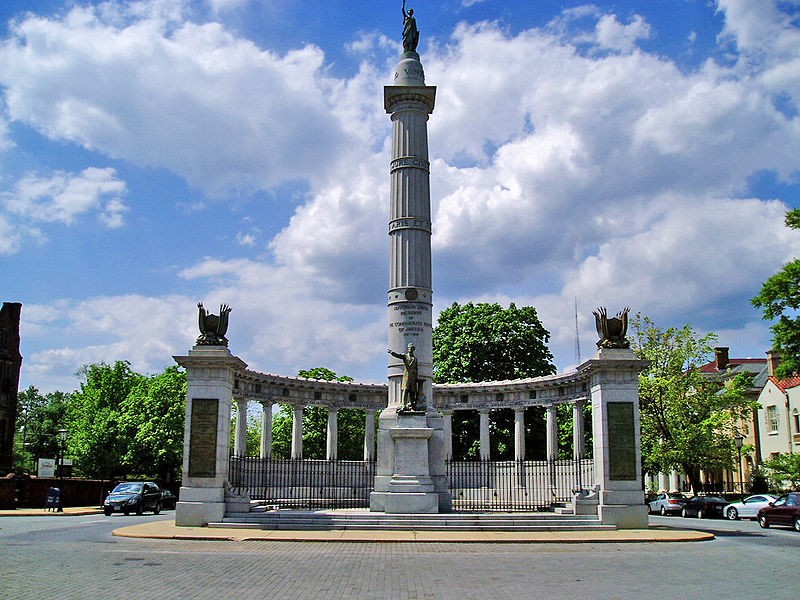
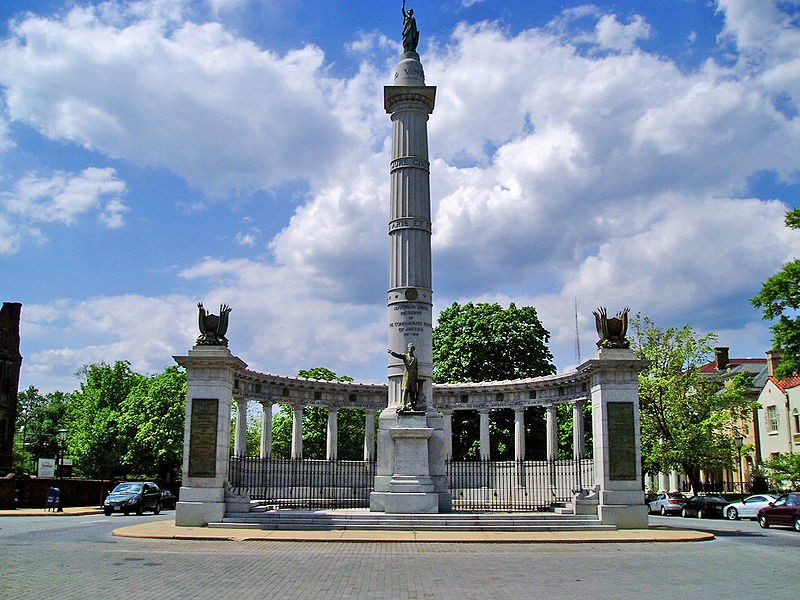
Confederate veterans at the unveiling of the Jefferson Davis Monument in 1907.
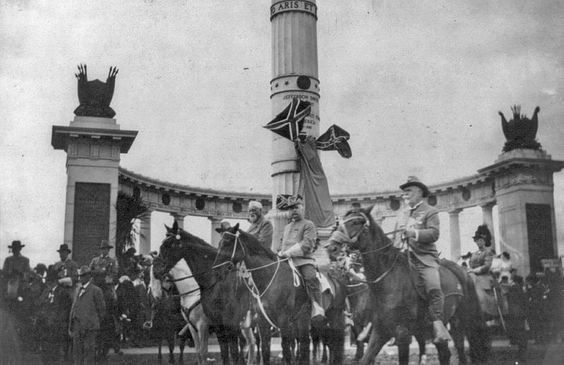
Attendees at the unveiling of the Jefferson Davis Monument in 1907.
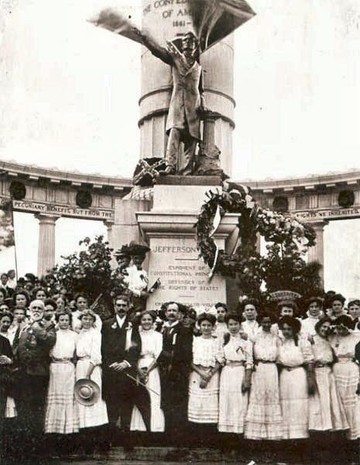
Jefferson Davis, President of the Confederate States of America.
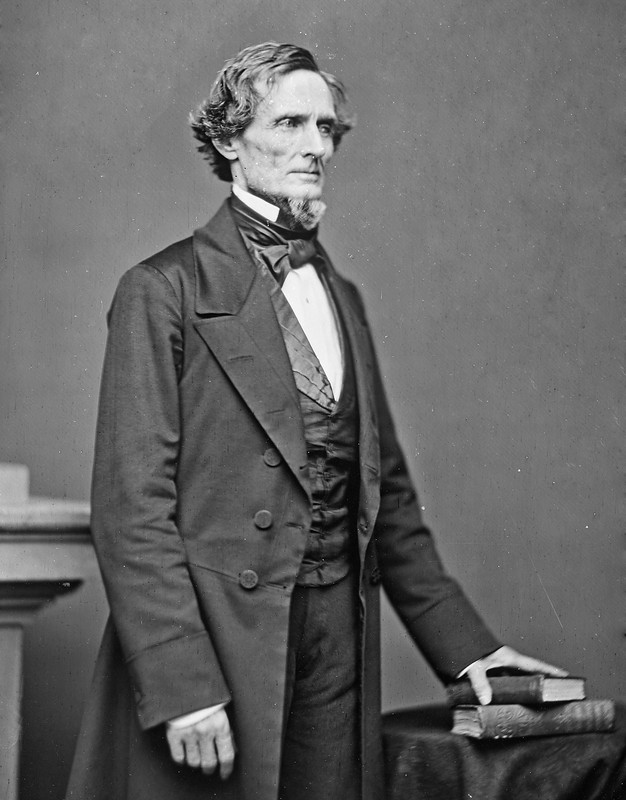
Historic postcard of the Jefferson Davis Monument.
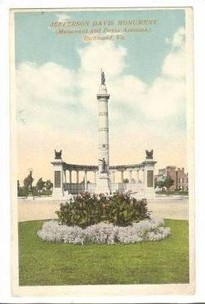
Bronze statue of Jefferson Davis
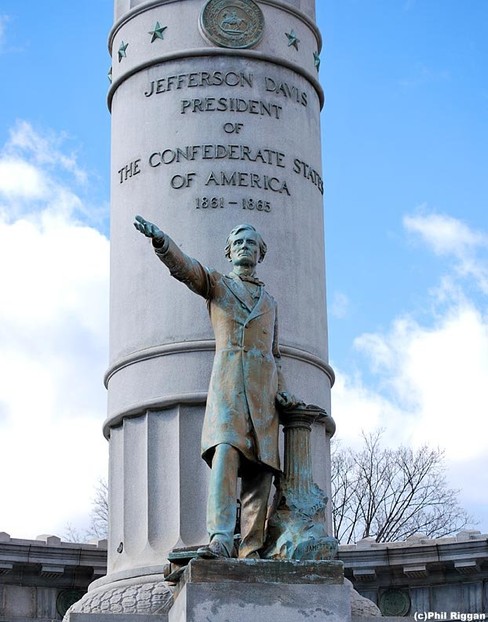
Bronze statue of Jefferson Davis in his monument.
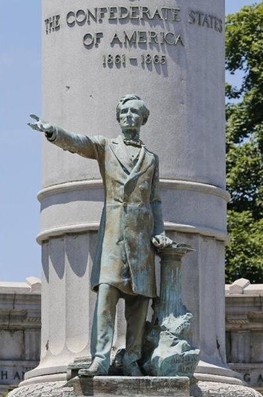
Jefferson and Varina Davis
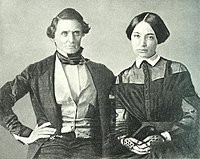
Varina Anne Banks Howell Davis, second wife of Jefferson Davis and First Lady of the Confederate States of America.
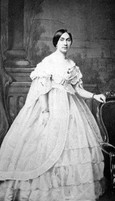
Jefferson Davis in his old age.
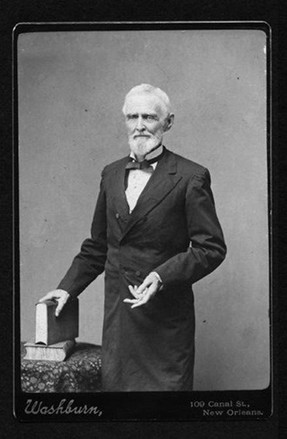
Jefferson Davis statue toppled in Richmond
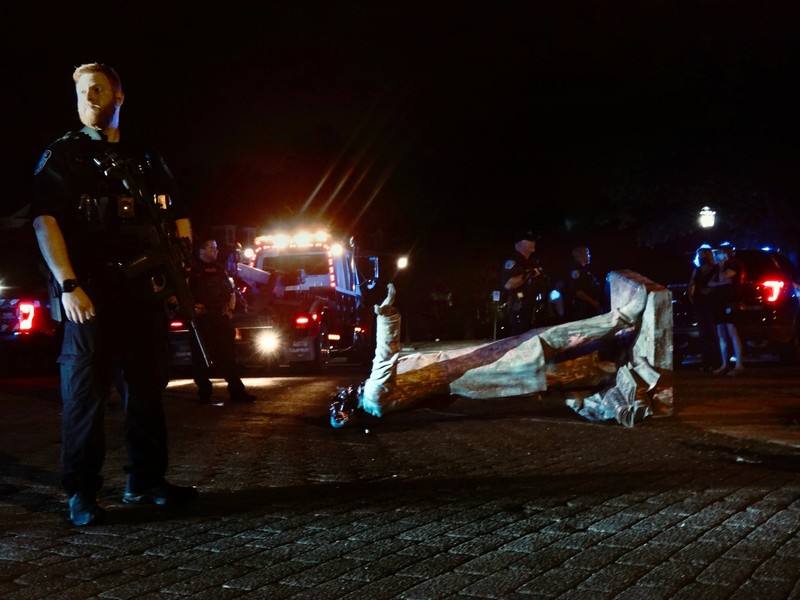
Backstory and Context
Text-to-speech Audio
Despite calling Mississippi home, Jefferson Davis was born the youngest of ten children on June 3, 1808 on his family’s farm in Fairview, Kentucky. Three years later in 1811, the Davises moved south, first to St. Mary Parish, Louisiana then to Wilkinson County, Mississippi. When Davis was sixteen-years-old, he received an appointment to the United States Military Academy in West Point, New York. After graduating from West Point in 1828 and serving a short stint in the Black Hawk War, he returned to Mississippi and established his cotton-producing Brierfield Plantation. By 1860, Briarfield was home to 133 enslaved persons. During the 1840s and 1850s, Davis worked as a U.S. Representative and Senator and as the U.S. Secretary of War.
In January 1861, however, he resigned from his Senate post when Mississippi seceded from the Union. With his military background, Davis sought an appointment in the Confederate Army, but the Confederate government believed he would better serve the South as President. On February 18, 1861, Jefferson Davis was inaugurated as President of the Confederate States of America, first on a provisional basis then for a six-year term. Despite his early popularity in the South, Davis faced a number of challenges, including personal chronic illness, internal dissent against the Confederacy and executive power, and multiple invasions by U.S. forces that overran key Southern cities and strategic points early in the conflict. The Confederacy eventually succumbed to U.S. forces, notably the eventual capture of Confederate capitol Richmond by Union forces in April 1865. On April 2, Davis fled Richmond as Union troops approached. He was captured about a month later, jailed for two years, and released on bond in 1867. Once free, Davis traveled Europe and eventually returned to Mississippi, where he retired to Beauvoir Estate. In 1881, Davis published a book based on his Civil War experiences, The Rise and Fall of the Confederate Government. He died in New Orleans, Louisiana on December 6, 1889.
The funeral for Jefferson Davis became the one of the largest ever witnessed in the South, but his resting place in the Metairie Cemetery in New Orleans would not be the last for the former Confederate President. Two weeks after his death, the Jefferson Davis Monument Association formed in Richmond with the intent on reinterring his body in the city’s Hollywood Cemetery and constructing a monument in his honor. The Association promptly petitioned Varina Davis, Jefferson’s second wife and mother of his children, to approve the plan. Varina agreed to the plan in early 1891, and Davis was reinterred to Hollywood Cemetery in June 1893.
The United Confederate Veterans met in 1892 to plan what essentially became the South’s memorial for Davis. The UCF placed the responsibility on the Jefferson Davis Monument Association to raise $250,000 for a grand memorial. However, a severe economic depression struck the country in 1892 which prevented the Association from raising the necessary funds. The Association remained largely unproductive during the next four years, only devising a plan for an extravagant Classical style temple and laying the cornerstone for the structure. The Association admitted defeat in 1896 and petitioned the United Daughters of the Confederacy to take control of the project. The Daughters completely scrapped the plan for a Classical temple and scaled down the budget to $50,000. After disapproval from Varina Davis regarding a design plan for a triumphal arch, the Daughters and Varina accepted a proposal around 1902 from Richmond-based sculptor Edward V. Valentine and architect William C. Noland. The monument was also relocated to Monument Avenue at the intersection of Cedar Street.
The design created by Valentine and Noland consists of a semi-circular colonnade of thirteen Doric columns, each representing the eleven states that seceded and the two whose delegates attended the Confederate Congress. Inside the colonnade is a larger Doric tower that supports a statue of Vindicatrix, the female allegorical symbol of the Confederacy and the Lost Cause. A bronze statue of Jefferson Davis, arm outstretched as if speaking to a crowd, stands in the center of the monument. On Jefferson Davis’ 99thbirthday, June 3, 1907, the Richmond monument was officially unveiled by his only surviving child, Margaret Davis Hayes, to a crowd estimated between 80,000 and 200,000 attendees. The unveiling of the Davis monument became the highlight of the United Confederate Veterans reunion that year, which also became the largest such gathering in the Lost Cause era. Dedication of the monument is described in the 1911 book Historic Southern Monuments: Representative Memorials of the Heroic Dead of the Southern Confederacy. It recounts the dedication ceremony in romanticized terms, praising Confederate "heroes," lamenting the "Lost Cause" of the South, and emphasizing Davis' patriotism and Christian virtue. It reports:
The dedication of the Davis monument was all that could have been imagined. Such a sea of human beings was hardly ever seen in the South, and for a Confederate occasion its like is not expected to appear again...Such a joyous throng of so great magnitude must have rarely ever been witnessed on this earth.
Among all in that vast throng, met to give honor to the memory of the President of the Confederacy, but one spirit seemed dominant--the love of the South, her heroes, her institutions, and the cause for which her sons fought and bled. While this day seemed one of joy, it was only such joy as comes to those who have faith in a cause--even though a lost one--and glory in doing honor to those who bore the grievous burdens of our Southland in the bitter days that felt the hand of the invader....
...Our children's children should be taught to honor and revere his memory. They should assemble on each June 3, the anniversary of his birth, and strew immortelles on his grave and learn from the matchless oratory of the Veterans the true worth of this great American patriot and Christian soldier.
Nationwide, there are over 700 Confederate monuments and statues on public property such as courthouses, other official buildings, and parks. Though some were erected immediately following the American Civil War, there was a sharp increase in public art dedicated to the Confederacy during the late-19th and early-20th Centuries, particularly in the South. The Lost Cause Movement, which sought to minimize the horror of slavery and the central role of slavery in the South's attempt to secede influenced the drive to erect these monuments. Bill Martin, local historian and director of Richmond's Valentine Museum, explained that the monuments were erected by officials who wished to construct "this comfortable past that allows you to deal with the horror of what this city looked like and did during the war as a center of the domestic slave trade in this country."[7]
Since its erection, the Jefferson Davis monument, in particular, has generated much controversy. As the only non-Virginian represented in the entirety of Monument Avenue, the intention of including Davis in the avenue is blatantly clear tribute to the Confederate ideology of white supremacy and slavery. Following the war, Davis became the face of the Confederacy and all for which it stood, going so far as to be seen as the messiah figure of the South, as he was the one who suffered for the sake of his people.
In recent years, calls for the reinterpretation or removal of the monument increased. Following the eruption of violence in nearby Charlottesville in August of 2017 Richmond Mayor Levar Stoney noted Confederate statues had become, in his words, "a rallying point for division and intolerance and violence," [quoted in Robinson]. Mayor Stoney established a ten-person Monument Avenue Commission to seek out public opinion regarding the perception and future of Monument Avenue; the commission recommended removing the Jefferson Davis Monument. Virginia law, however, prevented the removal of the monument.
In March 2020, the Virginia General Assembly passed a law allowing for local communities to remove Confederate monuments which would go into effect on July 1. The Jefferson Davis Monument fell before the City of Richmond could take action. On the evening of June 11, 2020, during a rally over the death of George Floyd and systemic racism, protestors toppled the bronze statue of Jefferson Davis. The crowd remained and sang songs as work crews arrived to haul the statue away. Mayor Stoney reacted by noting: “Richmond is no longer the capital of the Confederacy — it is filled with diversity and love for all — and we need to demonstrate that.” He vowed to remove other Confederate statues, and indeed, all the other Confederates along Monument Avenue have been removed. Although the bronze Jefferson Davis is gone, the colonnade remains.
Sources
1. Cooper, William Jr. Jefferson Davis, American. New York: Vintage Books, 2000.
2. Cooper, William Jr. Jefferson Davis and the Civil War Era. Baton Rouge: Louisiana State University Press, 2008.
3. Emerson, B.A.C. Historic Southern Monuments: Representative Memorials of the Heroic Dead of the Southern Confederacy. New York: Neale, 1911.
4. "Jefferson Davis." Civil War Trust. Accessed February 20, 2017. http://www.civilwar.org/education/history/biographies/jefferson-davis.html?referrer=https://www.goog....
5. "Monument Avenue Historic District." National Park Service. Accessed February 20, 2017. https://www.nps.gov/nr/travel/richmond/monumentavehd.html.
6. Robinson, Mary. "Richmond branch of NAACP calls for removal of Confederate statues." Richmond Times Dispatch. August 23, 2017. Accessed September 6, 2017. http://www.richmond.com/news/local/city-of-richmond/richmond-branch-of-naacp-calls-for-removal-of-co....
7. Silva, Daniella. "Richmond Could Be Next Confederate Monument Battleground." NBC News. August 20, 2017. Accessed September 6, 2017. https://www.nbcnews.com/news/us-news/richmond-could-be-next-Confederate-monument-battleground-n79374....
8. Southern Poverty Law Center. "Whose Heritage? Public Symbols of the Confederacy." 2017. Accessed August 20, 2017. https://www.splcenter.org/sites/default/files/whoseheritage_splc.pdf.
On Monument Avenue | Richmond's Confederate's Honor Their President. The American Civil War Museum. June 11, 2019. https://acwm.org/blog/monument-avenue-richmonds-Confederates-honor-their-president.
9. Women and Confederate Culture on Monument Avenue. The American Civil War Museum. . June 11, 2019. https://acwm.org/blog/women-and-Confederate-culture-monument-avenue.
10. Kollatz, Jr., Harry. The Story of Vindicatrix. Richmond Magazine. September 29, 2017. June 11, 2019. https://richmondmagazine.com/news/richmond-history/the-story-of-vindicatrix/.
11. Lombardo, Clare. Richmond, Va., Panel Recommends Removing Jefferson Davis Statue. National Public Radio. July 3, 2018. June 11, 2019. https://www.npr.org/2018/07/03/625597993/richmond-va-panel-recommends-removing-jefferson-davis-statue.
12. Schneider, Gregory. Richmond monument panel urges removing Jefferson Davis statue. The Washington Post. July 2, 2018. June 11, 2019. https://www.washingtonpost.com/local/virginia-politics/richmond-monument-panel-urges-removing-jefferson-davis-statue/2018/07/02/73636904-7e17-11e8-bb6b-c1cb691f1402_story.html?utm_term=.0ecaed1787d3.
13. 127-0174 Monument Avenue Historic District. Virginia Department of Historic Resources. April 1, 2019. June 11, 2019. https://www.dhr.virginia.gov/historic-registers/127-0174/.
14. Monument Avenue Historic District. National Park Service. June 11, 2019. https://www.nps.gov/nr/travel/richmond/monumentavehd.html.
15. Levin, Kevin M. What Richmond Has Gotten Right About Interpreting Its Confederate History. Smithsonian Magazine. May 18, 2017. June 11, 2019. https://www.smithsonianmag.com/history/what-richmond-has-gotten-right-about-interpreting-its-Confederate-history-180963354/.
16. Griego, Tina. Past and Present: The Many-Sided History of the Monument Avenue Debate. Richmond Magazine. June 25, 2015. June 11, 2019. https://richmondmagazine.com/news/news/monument-ave-history/.
17. Oliver, Ned. "'A huge step': General Assembly says local governments can remove Confederate monuments." March 8, 2020. Virginia Mercury. Web. Accessed November 9, 2020. https://www.virginiamercury.com/2020/03/08/a-huge-step-general-assembly-says-local-governments-can-vote-to-remove-confederate-monuments/
18. "Jefferson Davis monument torn down by protesters in Richmond." June 11, 2020. NBC 12. Web. Accessed November 9, 2020. https://www.nbc12.com/2020/06/10/jefferson-davis-monument-pulled-down-by-protesters-richmond/
19. Levenson, Michael. "Protesters Topple Statue of Jefferson Davis on Richmond's Monument Avenue." June 11, 2020. New York Times. Web. Accessed November 9, 2020. https://www.nytimes.com/2020/06/11/us/Jefferson-Davis-Statue-Richmond.html
Lydia Armstrong, New York Times: https://www.nytimes.com/2020/06/11/us/Jefferson-Davis-Statue-Richmond.html
